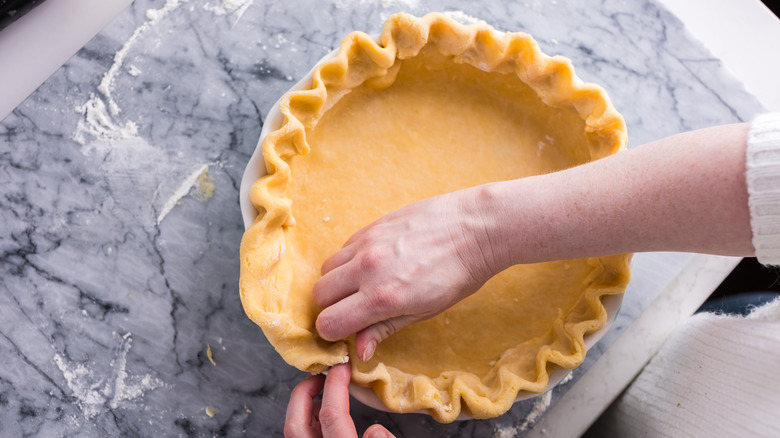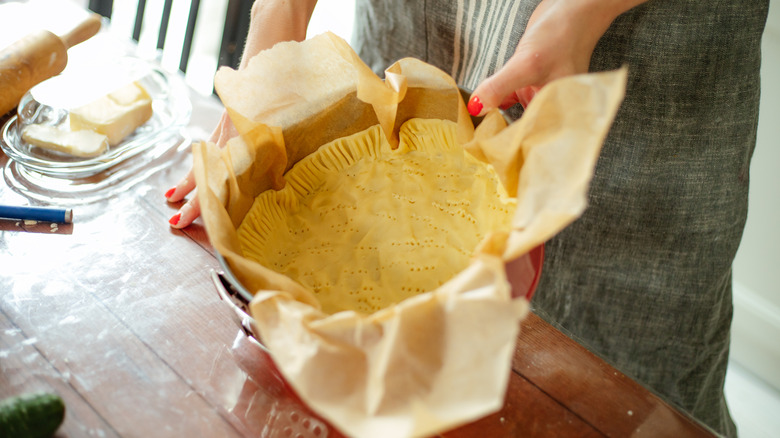What Is The 3-2-1 Rule For Making Pie Crust, And Does It Actually Work?
The 3-2-1 rule is like the holy grail of pie crust shortcuts: 3 parts flour, 2 parts butter, and 1 part water. That's it. It's the kind of thing that sounds too easy to work, but it really does. Once you get the hang of the texture and temperature, it becomes second nature. The perfect ratio matters because pie crust can be a bit of a stubborn food to perfect. It doesn't like to be overworked, over-handled, or overheated. However, using the 3-2-1 rule gives you a roadmap so things don't go sideways. You don't need to guess how much butter or fat to cut in, or whether your dough is too dry. And once you realize that all these numbers are by weight, not volume, it clicks. You can scale it up or down depending on the size of your pie dish or how many pies you plan on making.
One important thing to note is that your butter should be cold... frozen even, if you're heavy-handed with kneading. Using warm butter is the biggest mistake keeping you from having flaky pie crusts. Water should be added slowly, and just enough until the dough holds together when pinched. This should contribute to that flaky crust we all chase. The high butter content creates steam when it hits a hot oven, which forms those buttery layers everyone loves. Moreover, the low water content helps minimize gluten development, so you're not left with a chewy crust.
A traditional and customizable European staple
Now, here's where things get interesting when using the 3-2-1 ratio for pie crust. This approach isn't just some TikTok trend or Pinterest hack. It's reminiscent of traditional European pastry techniques, where weight-based ratios are used. Unlike the cup-and-spoon method common in American baking, using weight here is about precision, and precision in pie dough matters more than most places in the kitchen. So, yes, the 3-2-1 rule absolutely works, as long as you treat it like a guide, not gospel. Keep all your ingredients cold, don't over-handle the dough, and chill it before rolling. And some folks might swear by adding a little vinegar or sugar for insurance, or tossing a shot of vodka in the crust for extra flakiness.
A common pie crust mistake is over-baking the crust, as this can lead to burnt edges. What you want is a crust that's sturdy enough for quiche or tender enough for fruit pies. Plus, the moment you're comfortable with the 3-2-1 rule, it becomes a blank canvas. You can choose to swap in some rye or whole wheat flour for a different flavor, or add a pinch of black pepper or Parmesan for a twist. That way, you're not locked into a one-size-fits-all crust, and the 3-2-1 method remains reliable and adaptable. No complicated steps or long ingredients list needed, just a simple ratio.

